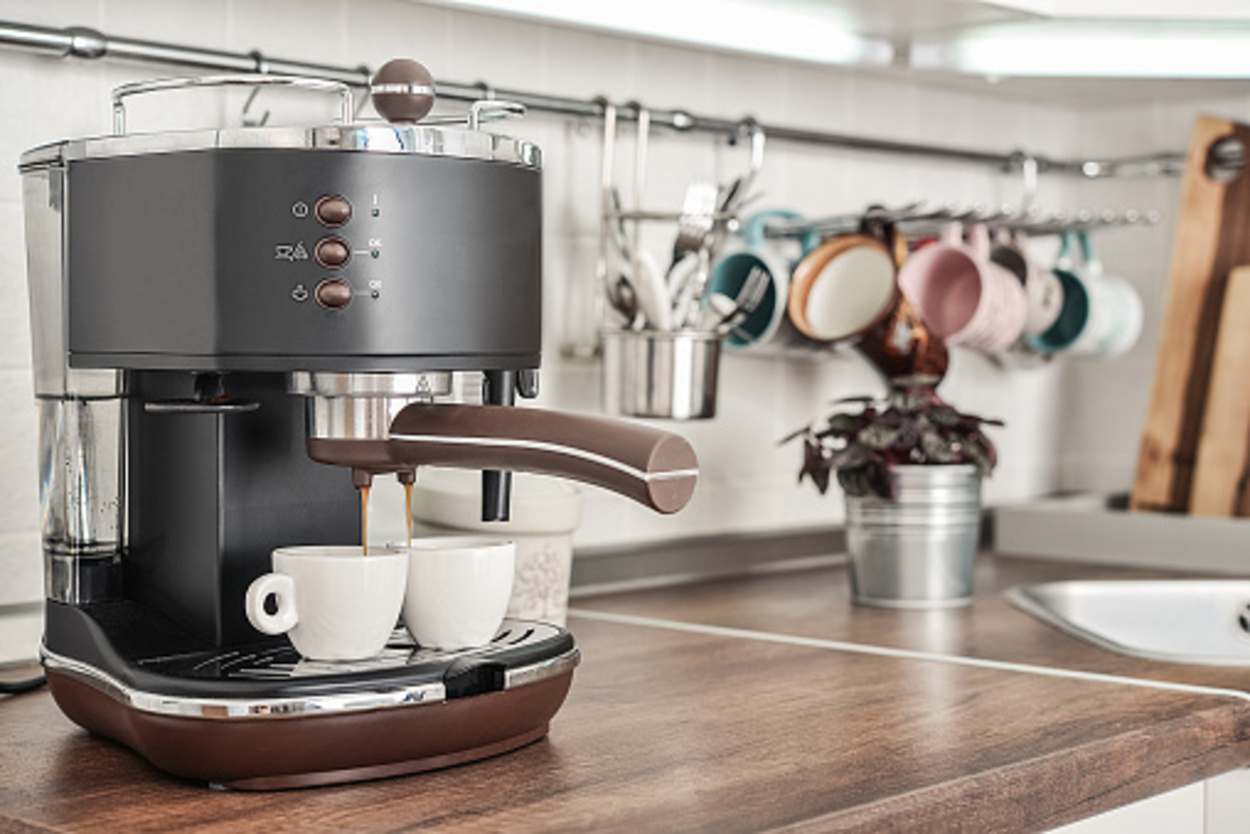Breville’s products should be on the radar of anyone looking to purchase a semi-automatic espresso machine. Many coffee enthusiasts prefer Breville espresso makers. For over a decade, their best-selling Barista Express has been a hit.
The Breville Barista Pro is an excellent coffee machine for anyone who wants to make delicious espressos, lattes, and cappuccinos without worrying about grinding or frothing. But can it land on your expectations?
The Breville Barista Pro is more than just a coffee maker. Instead, the machine produces the best coffee and consistently delivers results without sacrificing quality or flavor.
The Breville Barista Pro is worth considering if you’re a barista, homebrewer, or simply looking for an upgrade from your current coffee machine.
This article will teach you everything you need to know about this aesthetically pleasing espresso machine, including why it’s worth considering and how to use it. So that you are fully aware of its advantages and disadvantages before making a purchase.
So let’s dive right into the nitty-gritty details of this machine:
Specifications
The Breville Barista Pro is a stylish addition to Breville’s espresso machine lineup. When you take the packaging off, you’re going to be blown away by what you see. Here is the list of specifications of Breville barista pro:
| Dimensions | 35.4 x 41 x 40.6 cm 9.08 kg |
| Power | 1650 Watts |
| Settings | You can Have Adjustable Grind Control, Intuitive LCD Interface, 1 and 2 Cup Volumetric Control |
| Voltage | 220 – 240 Volts |
| Warranty | 2 Year Repair Warranty |
| Accessories | Single-cup and Dual Wall cup Filter Baskets The Razor™ Precision Dose Trimming Tool Integrated Tamper 480 ml Stainless Steel Milk Jug Cleaning Kit Water Filter |
| Capacity | 2 L Water Tank 250 g Bean Hopper |
| Construction Material | Brushed Stainless Steel |
Now that you’re well aware of the specifications of Breville Barista Pro let’s take a sneak peek into its design.
Design And Size
The Breville Barista Pro combines traditional Breville styling with a modern, minimalistic approach.
The espresso machine is housed in a case made of brushed stainless steel. The case itself has been modernized with a curvaceous, modern design.
The footprint has remained largely unchanged, measuring 35.4 x 41 x 40.6 cm. Given that it includes a grinder as well as an espresso machine, it is an excellent choice if you are limited on bench space.
The espresso machine has an easy-to-use LCD interface that displays grind size and time, as well as a shot timer. The screen is a standout feature that makes programming and adjusting settings a breeze.
The LCD screen also shows grinding and extraction progress animations, allowing you to see where you are in the brewing process. While the screen is a huge benefit, many users have complained about the loss of the pressure gauge, which is a useful visual guide to view extraction.
Breville’s attention to detail is evident in the Barista Pro. It’s in the details, from the magnetic tamper to the angled hot water spout that lets you make an americano without having to move your cup. The machine also has an energy-saving mode and a 30-minute auto-off timer.
The Barista Pro espresso machine is well-made, and with regular cleaning and maintenance, we expect it to last 5-10 years. However, because it was only released in 2019, its long-term durability has yet to be tested.
Features
The Breville Barista Pro is more than just a pretty face; it is packed with features that are rarely found in espresso machines at this price point, allowing it to produce a balanced-tasting cup of espresso. So let me give you more details on it:
Thermojet Heating System

The thermojet heating system is perhaps the most notable feature of the Barista Pro. This is the most recent technology seen in Breville Espresso Machines, and it was first seen in the Breville Bambino. The thermojet heating system heats the machine in just 3 seconds! It also allows for a nearly instantaneous transition from brewing to steaming.
The heating element only heats the water as it flows to the brew head, steam wand, or hot water spout. While this allows for rapid heating, the portafilter and group head are not heated until the machine is brewing. As a result, before brewing, run your portafilter under hot water or pull a couple of blind shots to preheat the actual machine. This will ensure that the espresso is extracted precisely.
PID Temperature Control
The PID temperature control on the Barista Pro espresso machine works in tandem with the heating system. This ensures that the water is properly heated for optimal espresso extraction. The PID temperature control is essentially a digital temperature control that ensures that the water temperature stays within two degrees of the set temperature. You can adjust the temperature of your shot by a 1°C increment on the espresso machine. The temperature is set to 93°C (199°F) by default, but you can adjust it to anywhere between 91°C (196°F) and 95°C (203°F).
Conical Burr Grinder
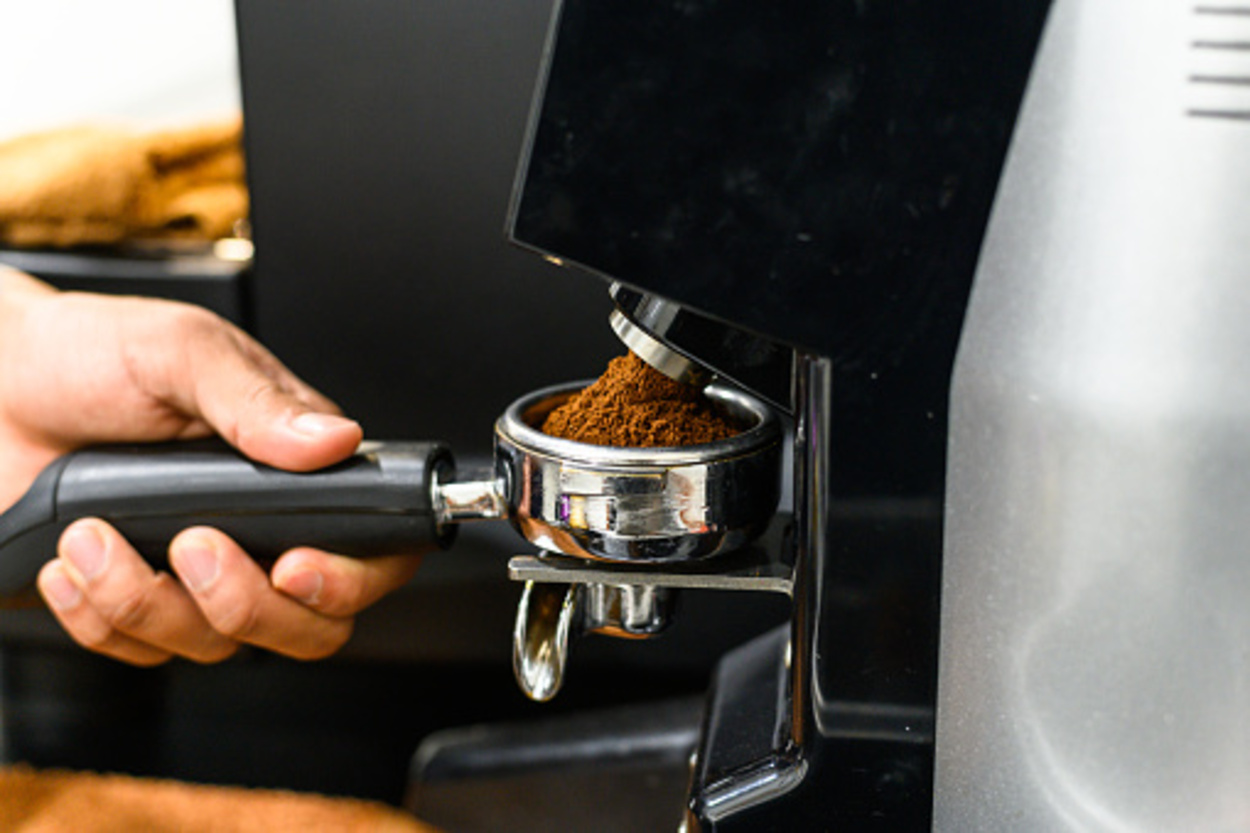
The Breville Barista Pro includes an integrated conical burr grinder, which is similar to the Smart Grinder Pro. With the usual caveats for built-in grinders in mind, this one is quite impressive. The integrated grinder has 30 fine grind settings (compared to the 18 offered by the Breville Barista Express).
An adjustable upper burr can also be used to broaden the grinding range. The grind setting is controlled by a dial on the machine’s front. With the grind size setting displayed on the screen, you turn it counterclockwise for a coarser setting or clockwise for a finer one.
The grinder allows for either timed or manual dosing. The default grind times for 1 cup are 9.5 seconds and 13 seconds for 2 cups, but these can be easily adjusted on the screen. Time-based dosing is a fairly accurate method of dosing your coffee. It also has a function that allows you to stop grinding in the middle for up to 10 seconds to redistribute the grinds in the portafilter before restarting.
Programmable Shot Control
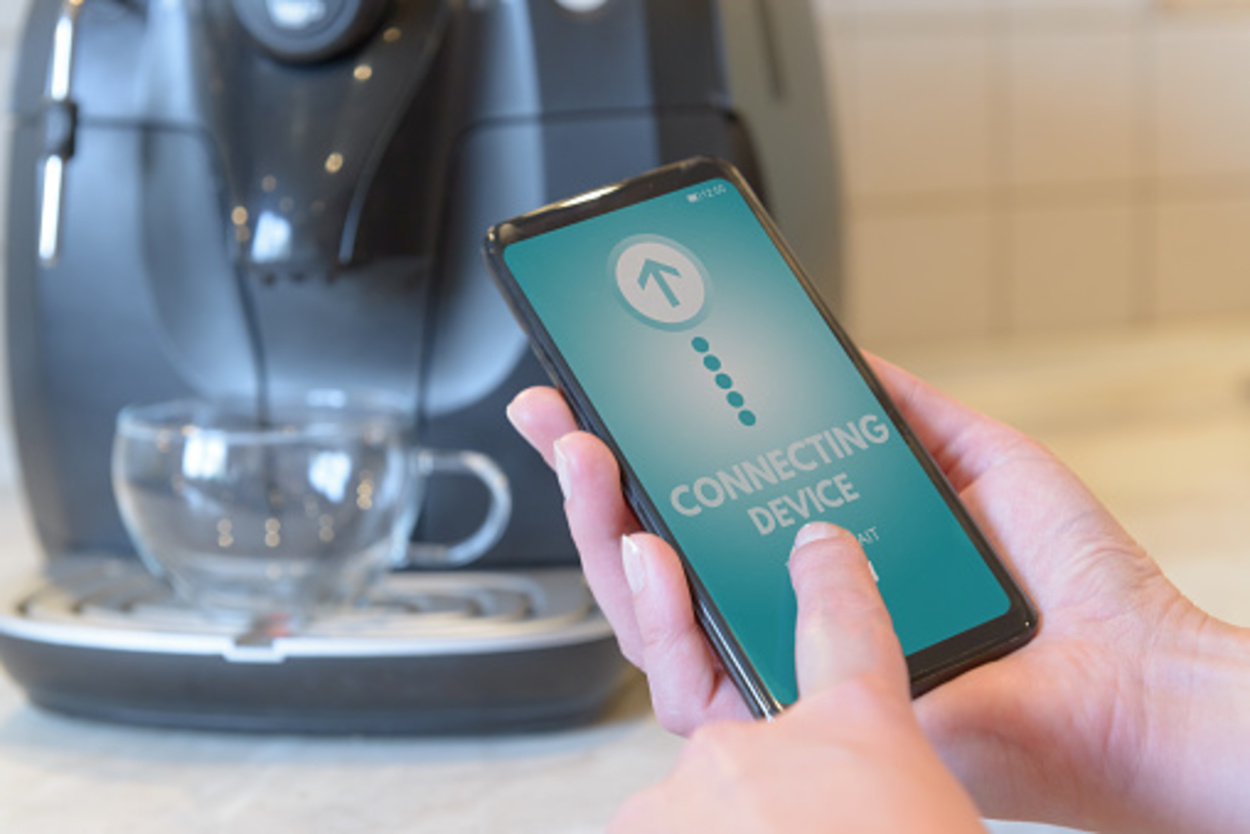
The Barista Pro espresso machine includes a 54mm portafilter as well as single and double shot baskets. The single basket can hold 8-10 grams of ground coffee, while the double basket can hold 19-22 grams. It’s worth noting that this machine comes with both pressurized and non-pressurized baskets.
The pressurized baskets are ideal for beginners because they make it easier to dial in your coffee beans. They’re also useful if you’re not using fresh coffee beans but still want a good crema. Non-pressurized baskets are preferred by espresso enthusiasts because they provide more control over-extraction and produce a full-bodied shot.
This espresso machine will produce a good shot of espresso regardless of which basket you use. It has a pre-infusion function that gradually increases pressure at the beginning of a shot to ensure even extraction. The single shot is set to 30mls by default, and the double shot to 60mls. However, this can be easily programmed to your desired volume or overridden manually.
Milk Frother
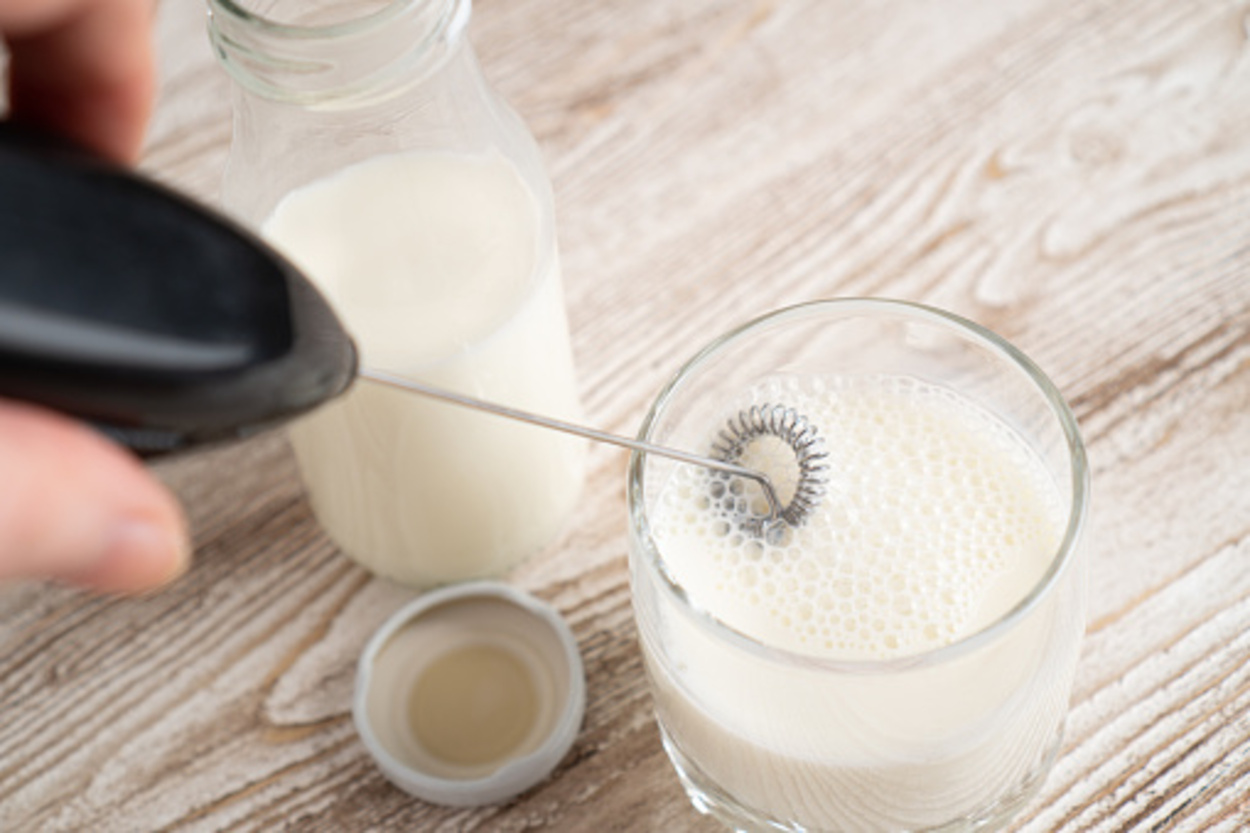
The manual steam wand on the Breville Barista Pro is very similar to that on the Barista Express. While the steam pressure isn’t spectacular, it’s adequate for beginners. Starting with a less powerful steam wand makes it easier to perfect your technique for producing microfoam milk.
The manual steam wand allows you to customize the milk temperature and texture, as well as create latte art. Because the steam pressure on the Barista Pro is slightly higher than on the Express, the steam wand has a four-hole tip, which makes it easier to heat the milk to the proper temperature.
Overall, the steam wand is capable of producing good microfoam milk and is simple to use. It’s also extremely fast to switch between brewing and steaming with almost no delay.
Cleaning
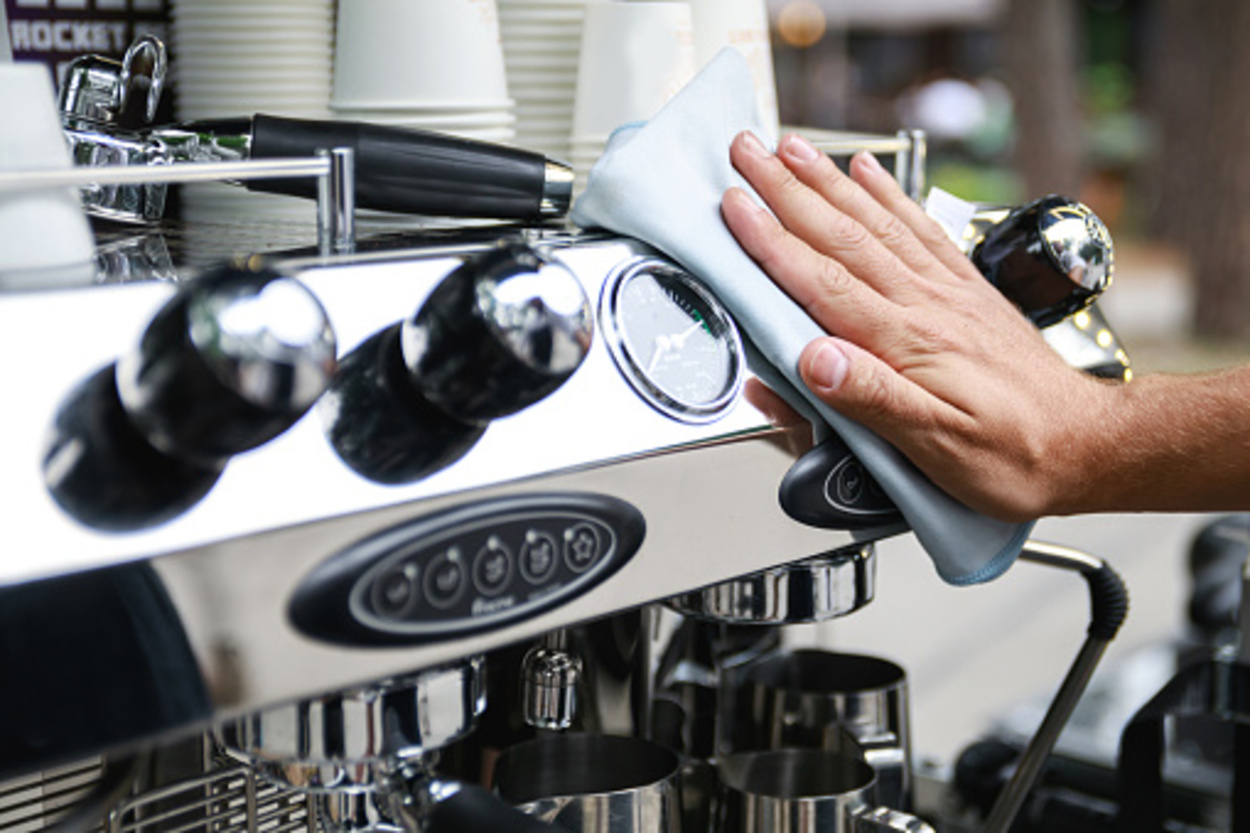
While the Breville Barista Pro has received positive feedback, the main issue users have encountered is with cleaning.
They are somewhat messy to use, as is typical of espresso machines with built-in grinders. The drip tray collects sludge from excessive grinds and water mixing and must be cleaned regularly. After each use, you should also clean and purge the steam wand and group head.
In addition, you should clean the grinder regularly to avoid the accumulation of oils. This is a fairly simple procedure that requires you to remove the hopper and upper burr, as well as brush the burrs and grinding chute clean.
Some main steps which include cleaning are:
- Flushing The Group Head
- Cleaning The Steam Wand
- Clean The Portafilter And Basket
- Clean The Drip Tray
- Cleaning The Knock Box
Review
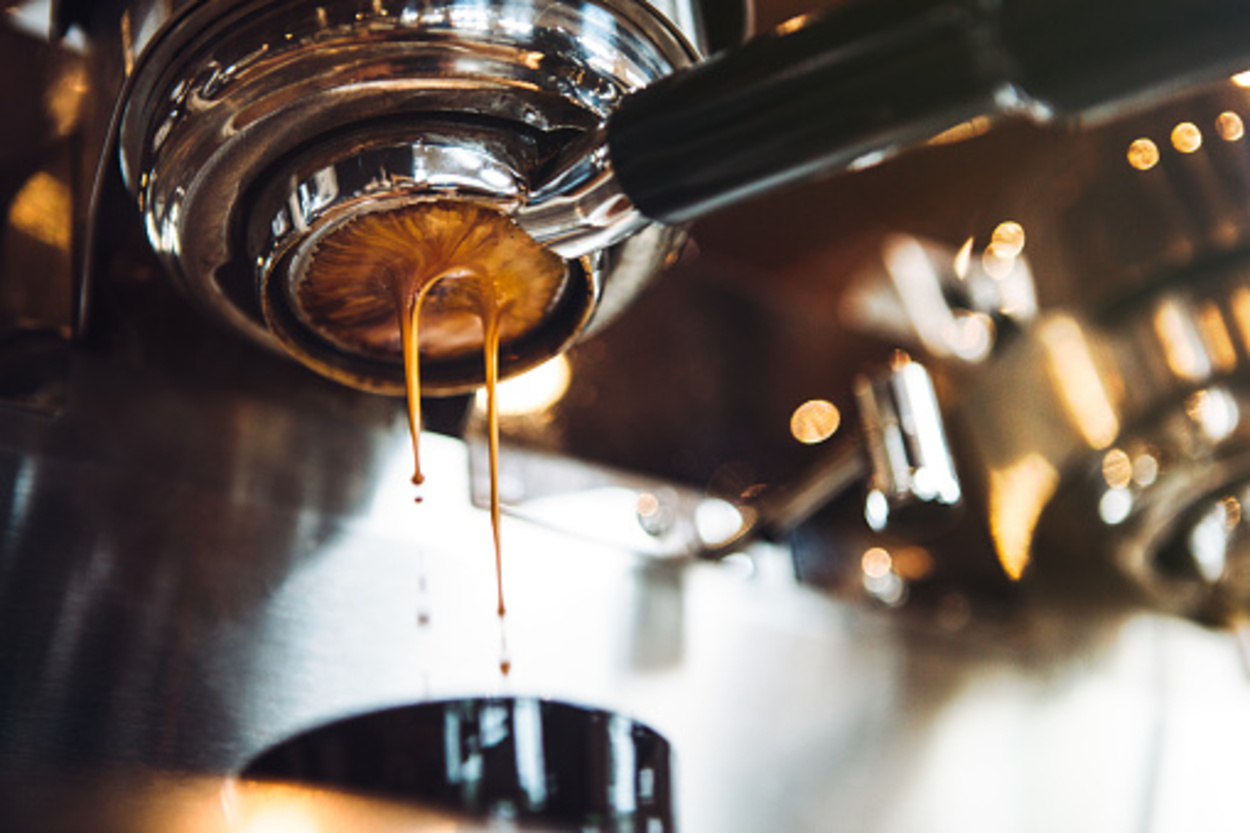
I believe the Breville Barista Pro is still one of the best espresso machines available but some things could improve.
The Breville Barista Pro has been on the market for a few years and is one of the most popular semi-automatic espresso machines. It has many advanced features that distinguish it from the competition, such as an integrated conical burr grinder, PID temperature control, the ThermoJet heating system, and a pre-infusion feature, to name a few.
I’m pleased with the performance and dependability of the Breville Barista Pro after months of use and hundreds of shots. Once you’ve mastered it, you’ll be rewarded with some of the best-tasting coffee you’ve ever had.
You don’t have to become a Barista to use this machine. Breville included pressurized filter baskets to make things easier for those who are just getting started or don’t have time to learn the fundamentals of espresso brewing.
However, if you are not particularly interested in learning about espresso and specialty coffee, the Breville Barista Pro may not be the best match for you since it’s not fully automatic and may require some of your time and effort.
Breville could have done a few things better as well. The first is that the machine – the cup tray and the group head – remain cold when idle. This will necessitate preheating the portafilter and cups with a couple of blank shots before brewing, which can be time-consuming. The second disadvantage is that the Breville Barista Pro grinder can retain up to 0.5 g of coffee in its internal workings. If you are single-dosing your coffee into the grinder, this is a problem.
Also, the grind consistency isn’t as good as some of the standalone grinders on the market, but expecting this from a built-in grinder is probably asking too much, especially at this price.
Overall, I believe the Breville Barista Pro is still one of the best espresso machines available, particularly for those who enjoy exploring the world of specialty coffee and are willing to put in the time to learn how to get the most out of it.
Other Options
Here are some of the best Breville machines:
FAQS
Here are some of the frequently asked questions:
Does Breville Barista Pro Have A Pressure Gauge?
Because the Breville Baristo Pro has an LCD screen, it does not have a pressure gauge. Instead, it allows you to time your shot more precisely, resulting in a much faster shot.
How Long Does It Take Breville To Heat Up?
The Breville Barista Pro heats up in 3 minutes, which is faster compared to other coffee makers. This feature has a wide range of applications, including the ability to make a cup of coffee in the morning or while waiting for guests.
Does The Barista Pro Need Descaling?
Many people are not aware that their barista pro coffee machine requires descaling. However, it’s critical to properly maintain your machine so that it continues to produce delicious coffee.
Descaling will remove deposits from the machine’s heating element and water inlet parts, which can cause a production halt when these deposits accumulate.
Is Barista Pro Better Than Barista Express?
Yes, barista pro is better in terms of barista express since the barista pro has been modeled after barista express and contains improved technology and features. Barista pro has better aesthetics, quick grinding, and improved steaming.
Is The Breville Barista Pro Fully Automatic?
No, the Breville Barista Pro is a semi-automatic espresso maker, not a fully automatic machine. This gives you more control over the brewing process and may result in a better cup of coffee, but it will necessitate a bit more effort on your part.
If you’re looking for an automatic espresso machine, check it out here.
Here are some tricks and tips for Breville barista pro:
Final Thoughts
The Barista Pro is an excellent entry-level espresso machine that is ideal for beginners. It has a built-in grinder and an LCD screen that makes it extremely easy to use.
The machine was designed with the consumer in mind; it’s simple to use and produces good results with little to no learning curve.
It produces excellent espresso shots and allows you to texture microfoam milk by hand for latte art. The Barista Pro espresso machine is a no-brainer if you are new to espresso and looking for a beginner machine.

